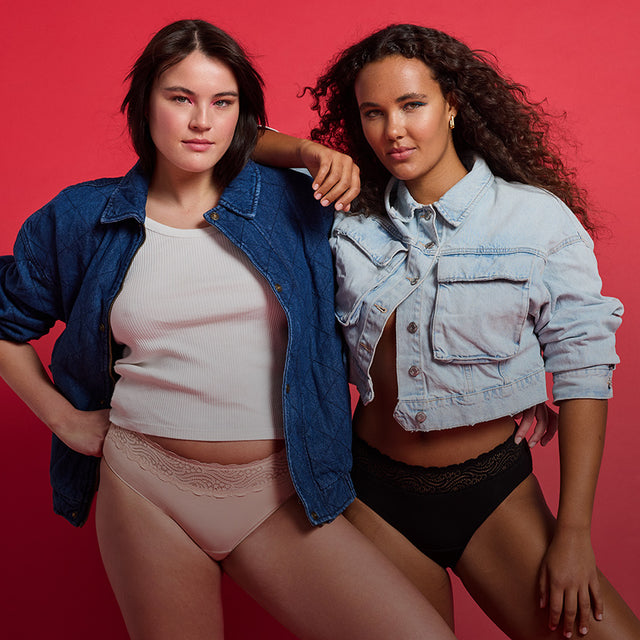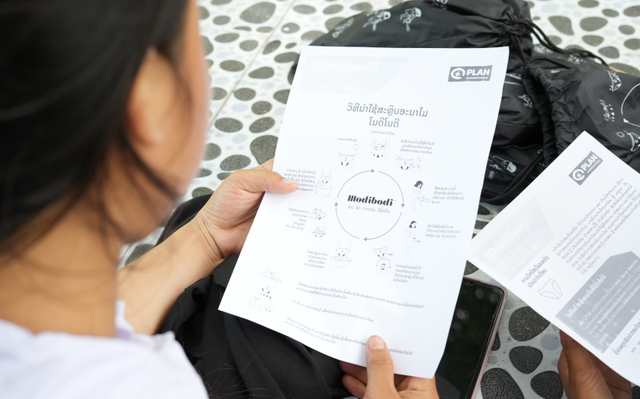In it together: how to be a non-binary and trans ally
Ever wondered how you can step up and be an authentic ally for your non-binary and trans mates? We’ve got you.
In this article, we speak with LGBTQIA+ advocate, educator and photographer Hank Paul about all things allyship. We get a refresher on what being transgender means, take a look at what non-binary gender is and explore how it differs from being gender fluid. Then we get into some practical steps you can take to be an awesome ally.
Wondering why allyship is so important? It’s simple: we’re all in this together. Society thrives when everyone feels safe, respected and valued for who they are. As an ally, your actions can help create an environment where transgender and non-binary folks can live authentically, free from fear and judgement.
And if you’re worried about getting it wrong, remember, we’re all learning together, and it’s okay to make mistakes. What matters is your willingness to listen, adapt and grow. Now let’s dive in.
What is gender identity?
Before we look at allyship, let’s catch up on the basics: what is gender identity? Generally, everyone has a sense of their gender identity. It's one part of who we know ourselves to be, our unique, individual identity and many things inform it. First, when we're born, we're all assigned a legal sex by the doctor – male or female – based on what our bodies look like. Society teaches us to assume that our gender identity will match the sex assigned to us. For most of us, that is the case. For some of us, our sense of our gender identity doesn’t align with our sex assigned at birth.
What does being transgender mean?
In a nutshell, ‘trans’ is an umbrella term for anyone whose gender identity doesn’t align with the sex that was assigned to them when they were born. Trans folks’ journeys often involve self-discovery and self-acceptance.
How trans people choose to affirm their gender is entirely up to them and can include anything from changing their names and wearing different clothes to taking hormones or having surgeries. And some people don’t do any of these things – because there’s no right or wrong way to be trans.
There are many genders that fall under the transgender umbrella. These include:
- People with a binary gender
- Non-binary people
- Genderfluid people
People who identify as trans women and trans men are people who fit into what we call the ‘binary genders’ (male and female). A trans woman is a woman who was presumed male at birth, and a trans man is a man who was assigned female at birth. Easy, right?
Though this isn’t the case for all trans people. Generally, society operates on a binary, giving us only 2 options for many things: man and woman, right and wrong, day and night. Many trans people see their gender as being placed somewhere in between the 2 ends of the binary – they see it outside of the binary or constantly moving around within it.
So, what’s non-binary?
What does being non-binary mean?
Like the name suggests, non-binary people don’t neatly fit into the binary genders of ‘male’ or ‘female’. They might identify as both, neither or something entirely unique to them. Some folks even identify across both binary and non-binary genders. Different people and cultural groups have different ways of thinking about genders, so the most important thing is for you to be respectful, curious and open to learning.
Wondering where genderfluid people come in?
What is genderfluid vs non-binary?
While non-binary people tend to be more fixed in their genders, genderfluid folks undergo shifts and changes in their gender identities over time. One day, they may feel like expressing themselves in a masculine way, while the next day, they might lean more towards feminine.
So when it comes to genderfluid vs. non-binary, genderfluid people tend to ride the waves of ever-evolving gender experiences, whereas non-binary people tend to stick to their unique genders.
While this may be the case for some, it’s important to note that gender identity is unique to each person, and there is no right or wrong way to express yourself within any gender. All these genders go to show the beautiful diversity in our communities, and it’s crucial that we respect and support everyone on their paths of self-discovery. That’s where being an ally comes in.
What is a non-binary and trans ally?
Hank, who identifies as non-binary and uses they/them pronouns, describes allyship as “respecting and validating people for who they are”. It’s all about showing up, listening and actively supporting people whose experiences and identities are different from your own. “Empathy and listening are essential components of allyship,” they say.
And it’s not just about how you talk and act when you’re around your non-binary and trans mates. Being an ally also means sticking up for them when they’re not around.
“For me, it matters a great deal what you say when I'm not in the room,” says Hank. “When allies are in the room and they hear someone get dead named – called by a name they no longer use – it’s really important that they can correct that person. Your allyship is at its best when I can’t see it.”
How can I be a good ally?
Being a good ally is an ongoing process, but the great news is that you’re already on your way just by reading this article. Educating yourself is one of the most important steps you can take towards becoming a better ally. Other steps include:
- Showing respect by using correct pronouns. Pronouns matter, and using them correctly shows respect and validation.
- Not tolerating disrespect. Stand up against any form of discrimination, bigotry or ignorance.
- Being patient. Offer support, lend an ear and be a safe space for people to explore and discover themselves. Let them know you’re there for them every step of the way.
- Amplifying gender-diverse voices. Take time to listen to the stories, experiences and perspectives of gender-diverse folks. And when you have the chance, use your platform to boost their voices.
- Using gender-neutral language and not assuming anyone’s gender. Keep your language gender-neutral whenever possible. Use inclusive terms that embrace everyone, and remember, never assume someone’s gender – let them tell you how they identify.
Most importantly, says Hank, “Accept that you will make mistakes. This is inevitable! I have not met a single ally – or a single human – who hasn’t made a mistake before.”
The good news is, you can learn to make mistakes well. Whether you’ve accidentally misgendered someone or called them by a name they no longer use, Hanks says all you need to do is say, “Oops, ouch, I’m sorry, thank you, and I’m still learning.”
Let’s take a closer look at their method.
Hank Paul’s Good Mistake Method
- Oops acknowledges you’ve made a mistake.
- Ouch shows you understand that the mistake has caused hurt or harm to the other person.
- I’m sorry gives you a chance to apologise for the mistake.
- Thank you demonstrates that you’re grateful for the emotional labour someone’s doing to point out your mistake and help you grow.
- I’m still learning is a self-affirmation to remind yourself that you’re learning, growing and doing your best.
Like everything, practice makes perfect. Keep trying, making good mistakes and improving – you’ll get the hang of it in no time.
How are we allies at Modibodi?
At Modibodi, we’re all about safety and inclusion for all people – no matter their gender. That’s why we talk about how anyone can get their period: women, men, non-binary or other gender-diverse folks. We’re proud to provide a platform for trans and non-binary people to share their experiences and normalise the conversation around the breadth of menstruation.
Along with amplifying gender-diverse voices, we’ve also created our All Gender collection – a range of inclusive designs to suit every body. In both 2022 and 2023, we have donated AU$2 to Twenty10 every time we sell a pair of Pride Briefs and Pride Longline Shorts. Twenty10 is a youth support group that does amazing work helping out young people of diverse genders, sexes and sexualities with housing, mental health, counselling and social support.
We’re in it together
So there you have it – everything you need to know about how to be a fantastic ally to trans and non-binary folks.
Have your trans and non-binary friends’ backs. Educate yourself, and use correct pronouns. Speak out against discrimination, be patient and understanding, amplify gender-diverse voices, and use inclusive language. And most of all, be kind, curious and respectful to one another.
Here’s to building a future where everyone’s an ally, no one’s left behind and gender diversity is celebrated. Because we really can make a difference together.








